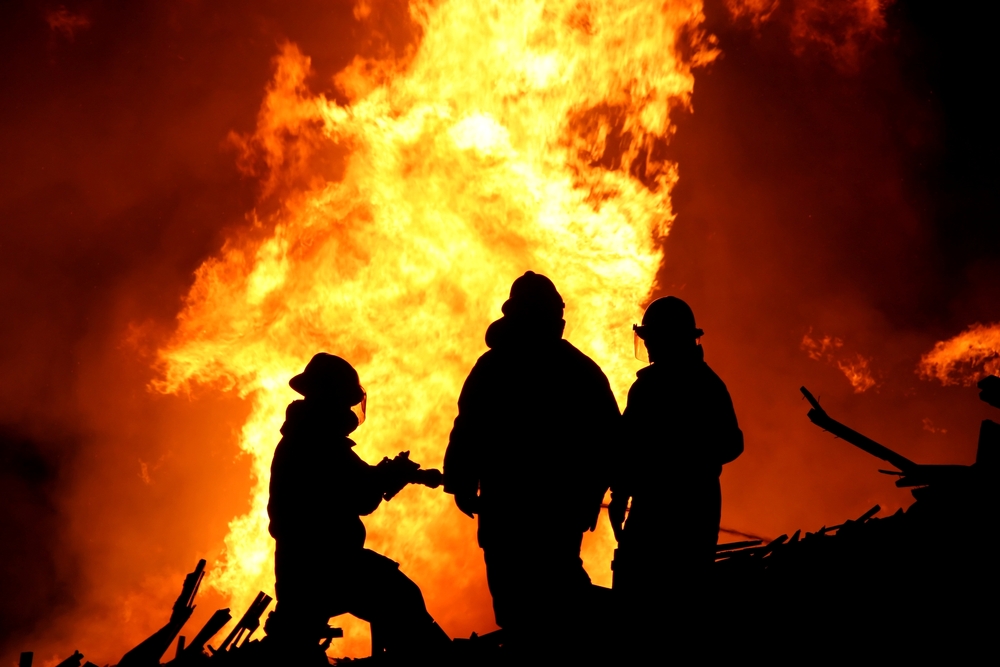9/11 Firefighters at Greater Risk of Multiple Myeloma Precursor, Study Reports

New York City firefighters exposed to the 9/11 World Trade Center (WTC) disaster are at greater risk for developing a condition called monoclonal gammopathy of undetermined significance (MGUS), which may lead to multiple myeloma, a study suggests.
The study, “Multiple Myeloma and Its Precursor Disease Among Firefighters Exposed to the World Trade Center Disaster,” appeared in the journal JAMA Oncology.
Fire Department of the City of New York (FDNY) firefighters and other 9/11 first responders were exposed to unprecedented levels of compounds such as polycyclic aromatic hydrocarbons, dioxins, polychlorinated biphenyls, asbestos, and other potential carcinogens. They were also exposed to significant levels of diesel smoke from the heavy machinery used in the 10-month rescue and recovery effort.
MGUS is characterized by the presence of an abnormal protein called monoclonal, or M, protein, which can be detected with blood tests. Prior research indicated that exposure to toxic chemicals caused the development of both MGUS and multiple myeloma.
“We were the first to show that first responders were more likely to get many different types of cancer,” David J. Prezant, MD, one of the study’s senior authors, said in a press release. Prezant is a professor of medicine at Albert Einstein College of Medicine and FDNY’s chief medical officer.
“We carried out this new study to do more than just treat cancer. We wanted to find early, predictive signs of cancer that would allow us to screen people and monitor those found to be at risk. By detecting MGUS, which predicts the development of multiple myeloma, we are able to do that,” he said.
Researchers collected blood samples from 781 white, male firefighters ages 50 to 79, who were exposed to the WTC rescue and/or recovery work between Sept. 11, 2001, and July 25, 2002. Compared with a control group that included non-exposed men from Olmstead County, Minnesota, the prevalence of MGUS in WTC firefighters was almost double (7.63 cases per 100 firefighters versus 4.34 cases per 100 controls).
“We saw a significantly higher incidence of MGUS in these first responders, and they’re developing it at a young age,” said Amit Verma, another of the study’s senior co-authors. Verma further observed that this early development of MGUS suggests an increased risk for early-onset multiple myeloma.
“Taken together, our results show that environmental exposure due to the WTC attacks is associated with myeloma precursor disease,” the investigators wrote in the study.
The scientists also analyzed 16 cases of multiple myeloma diagnosed between Sept. 12, 2001, and July 1, 2017, among white, male WTC-exposed firefighters, with an average age of diagnosis of 57. This is 12 years younger than the average age in the U.S. for multiple myeloma diagnosis.
Of note, 7 out of 14 analyzed firefighters had light-chain multiple myeloma. Prior research indicated that this disease subtype is more common after chemical or inflammatory exposures.
As a result of their findings, the scientists recommend screening WTC first responders for both conditions. “Screening for multiple myeloma risk by testing for MGUS is something we can offer these first responders, which is why this study is important,” Prezant said.
In an editorial comment, “Some Thoughts on Exposure to the World Trade Center Wreckage and Cancer,” Otis W. Bradley, MD, observed that as the firefighting profession has a greater overall risk of MGUS and multiple myeloma, 9/11 responders should have been compared with firefighters from another big city, a limitation the study’s own authors acknowledge.
He also wrote that the greater prevalence in 9/11 firefighters may have been due to more intensive screening of MGUS in WTC-exposed personnel. Bradley also cautioned that correlation does not mean causation.
A different study, “Estimation of Future Cancer Burden in World Trade Center-Exposed Fire Department of the City of New York Rescue/recovery Workers,” also published in JAMA Oncology, predicted how many cancer cases will be diagnosed among FDNY personnel exposed to the WTC disaster, including rescue and recovery workers, between 2012 and 2031.
Results indicate a projected total of 2,714 new cases among white males, particularly cancers of the prostate, thyroid, and melanoma. This estimate shows a greater cancer burden than the 2,596 predicted cancer cases in a similar, non-exposed population. Scientists estimate that the costs for the first year of cancer treatment for these workers will total more than $235 million.






